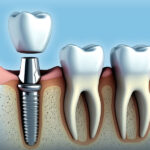When people hear about the promises made by Invisalign, they find it challenging to believe whether or not Invisalign can deliver the results, as mentioned. People think it is practically impossible to have straighter teeth without pain or with Invisalign braces that don’t have any metal brackets or wires.
The perception of people is justified because most have grown up either wearing metal brackets and wires or have seen friends wearing them. Significant time and effort are needed for teeth straightening with metal and wire brackets. Therefore it is a challenge to get people to believe it is indeed possible to correct orthodontic issues with a set of plastic trays. Therefore, questions are continuously raised about whether Invisalign is effective in reality? Let us look at some factors that must be considered to understand whether Invisalign is valid or not.
The Effectiveness of Invisalign
The most common misconception among people is that Invisalign aligners only function for minor issues. However, the reality is different because Invisalign can correct most mild, moderate, and in some cases, even severe orthodontic problems similar to metal and wire braces. People must understand that critical orthodontic issues cannot be corrected by braces alone and need other applications like expanders, spacers, and headgear. Gaps, crowding, and turned teeth are also fixed with Invisalign, just like metal and wire braces can rectify the issue.
When the aligners were introduced a couple of decades ago, they had certain limitations, but presently more issues can be addressed with Invisalign aligners than before. Earlier the aligners were best suited to treat a few problems while severe concerns required traditional treatments. Dentists in Cambridge now have more options with Invisalign because they have access to attachments, buttons, movements, and even elastics, which can be applied to the aligner.
The Invisalign transparent aligners system is an effective solution for a variety of teeth alignment problems, including a few crooked teeth or protruding teeth to severe issues like malocclusion, overbite, and underbite.
Invisalign braces are commonly used to treat gapped teeth, an overbite which occurs when the upper teeth protrude over the lower teeth, and underbite, which is the reverse of an overbite or a misaligned bite. Other issues that can be treated with Invisalign are overcrowding and crossbites, potentially leading to tooth decay, loss of teeth, gum disease, and many other problems when left untreated.
The Functioning of Invisalign
Invisalign uses a series of plastic aligners to move the teeth into a better alignment, unlike traditional braces that rely on a wire for moving the teeth into the most optimal arrangement. The 3D technology developed by Invisalign allows your orthodontists to create a treatment plan for you and give you information about what you can expect during the treatment. The orthodontist takes x-rays and impressions of your teeth to create a 3D image, which is used to map the precise moment of your teeth to straighten them out.
Your first set of custom fit aligners will be delivered to you when the plan is in place. After that, you will receive a fresh set of aligners every couple of weeks for the duration of your treatment.
Orthodontists warn patients about the differences between orthodontic treatments with metal and wire braces and Invisalign, keeping them informed that the Invisalign treatment may last longer than metal braces. The reason for the variance is because plastic is not as durable as metal, and the aligners system, therefore, progresses slower than metal braces.
The extended duration of the treatment should not concern patients who will experience positive benefits from the procedure. Invisalign in Cambridge, ON, subjects patients to less discomfort than patients choosing the traditional variety. Patients experience less soreness because the teeth are gradually moved into the desired position without being pushed and pulled.
Dental Art Clinics advises patients that the aligners can be removed for eating, brushing, and flossing and cleaning the aligners themselves. Invisalign clear braces are virtually invisible and eliminate any self-consciousness a patient may have when wearing traditional braces. The ability to remove the braces for everyday activities and even when socializing in no way means patients can neglect to wear the aligners. The treatment time with Invisalign will extend whenever patients do not wear the aligners for at least 20 to 22 hours every day. As long as patients are willing to adhere to the instructions of their orthodontists, they will undoubtedly believe Invisalign is indeed truly effective in reality for teeth straightening.






